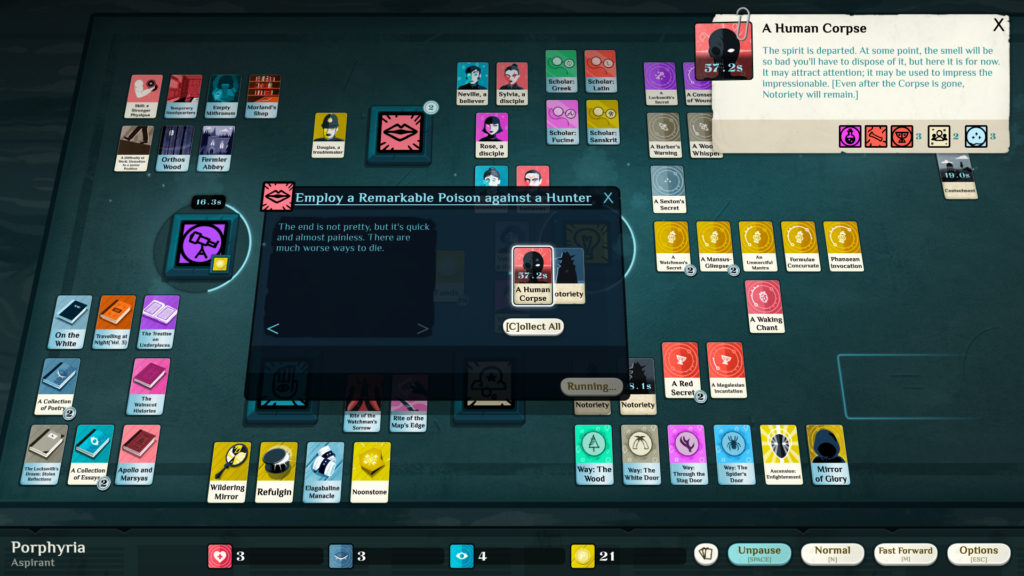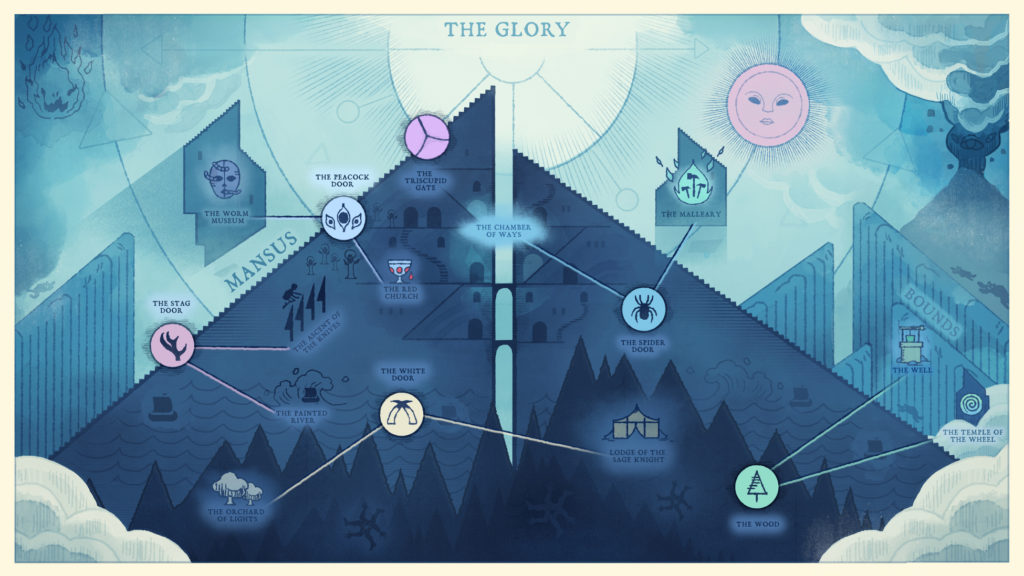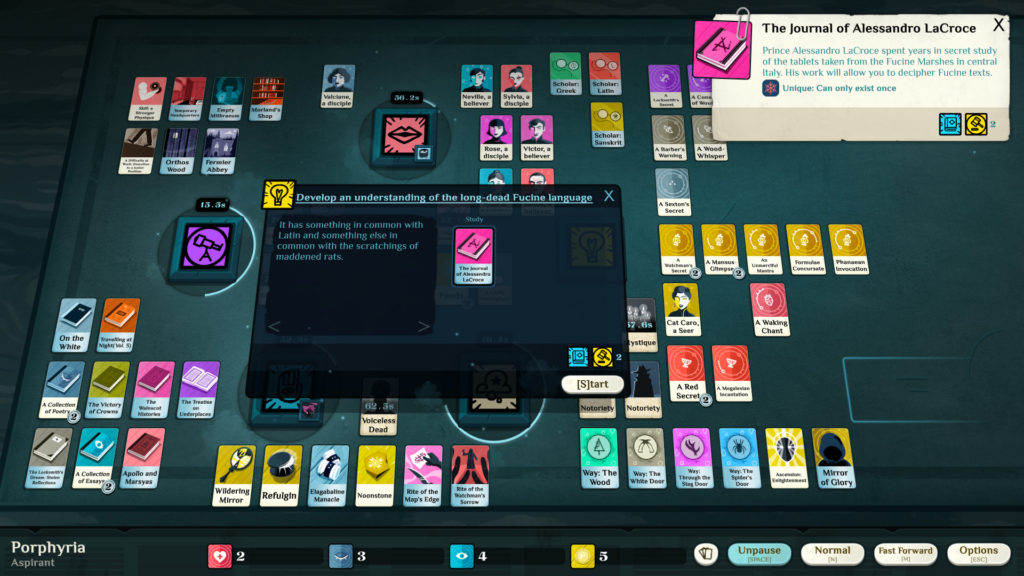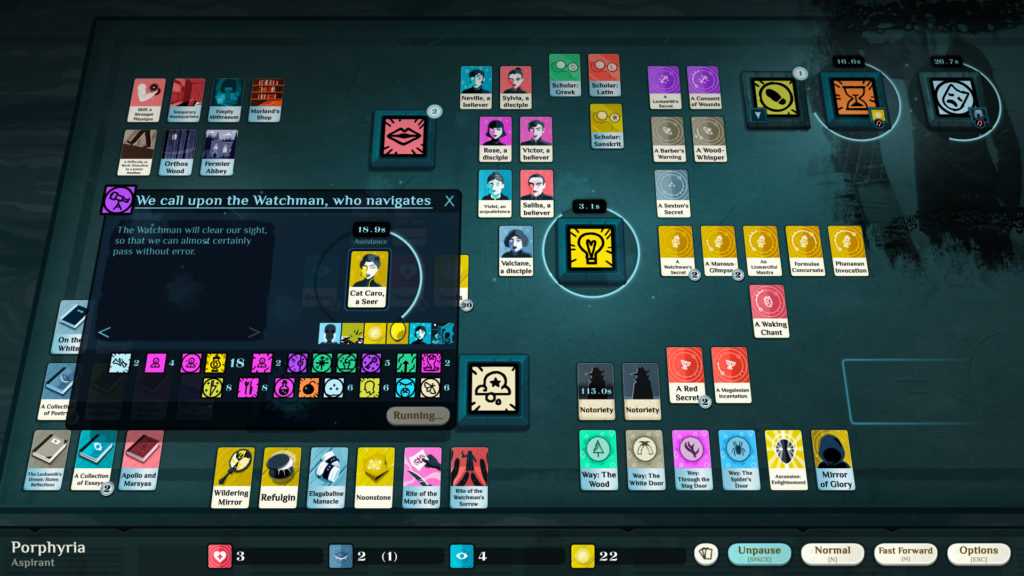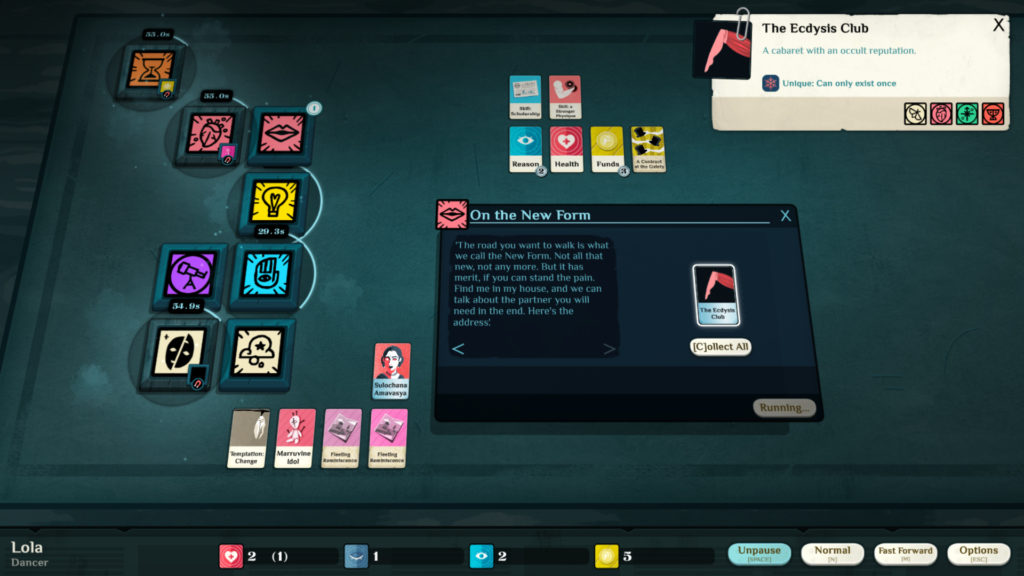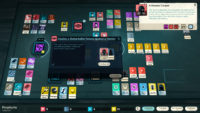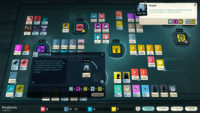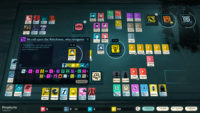Game: “Cultist Simulator: Initiate Edition”
Cultist Simulator: Initiate Edition

The occult has always held a strange, passing fascination for me, so when I stumbled upon news that narrative deck-builder, Cultist Simulator: Initiate Edition by Weather Factory, was coming to Nintendo Switch on 02/02/2021, my interest was immediately piqued. Released on Steam back in 2018, the game grew a *ahem* cult following, ahead of scooping multiple awards, so I was stoked to find out what all the fuss was about for the Nintendo Switch launch.
In the interests of full disclosure – I’ve always been a big fan of single-player card games. There’s something about having to rely only on your mastery of the game and thorough understanding of what might happen on the turn of the next card that’s hard to replicate in any other genre, I think. And when a developer distils that self-competitive essence into a videogame that doesn’t require a huge tabletop and allows you to save and resume the game to suit your time restraints, I’m a bigger fan still. I appreciate that the genre isn’t everyone’s cup of tea but bear with me here – this one might make you a convert.
At A Glance
| Visuals | 6 / 10 |
| Sound | 7 / 10 |
| Gameplay | 8 / 10 |
| Overall | 8 / 10 |
| Positives | + Steeped in rich, well-written lore
+ Progress feels genuinely rewarding + Explorative style is very engaging |
| Negatives | – Lack of tutorial/reference info could put players off
– Swing from ‘building success’ to ‘Game Over’ can happen FAST – Easy to get controls muddled |
There’s no messing around when starting Cultist Simulator for the first time – you’re whisked immediately from a pretty stylish title screen to a sparse looking virtual tabletop, and away you go. That’s right – no introductory story, no hints about the universe and no story to speak of – just one card, one empty slot on the screen and a vague scribbled note, seemingly written by you, the lead character, asking just what you’ll make of your life. By clicking on the ‘Menial Employment’ card and dropping it into the empty slot labelled ‘Work’, you start a timer and the story begins to unfold – unlocking actions and more cards in a quick flurry that soon sees you in midst of the action.
You quickly learn that there are two major components to the gameplay in Cultist Simulator: cards and actions. The cards are incredibly diverse and represent items, people, places, ideas, feelings, resources – you name it; actions are much more fixed however, and represent the different ways in which you can interact with your cards – they take the form of a small window that you can drop your card/s into before pressing ‘confirm’ to set the action in motion. The five actions are Work, Talk, Study, Explore and Dream, along with the ‘Time Passes’ icon that keeps all of the various aspects of the universe ticking along at the same rate.
It’s a deliciously simple system that works through the sheer variety of outcomes on offer; by plugging the same card into different actions you’ll get wildly different results. For example, dropping the ‘Reason’ card into the ‘Work’ field represents your character looking for a job based on his/her logical brain and skill, like an office job; while plugging the same ‘Reason’ card into the ‘Study’ window reflects the character studying newspapers and books to sharpen their mind. The potential options are mindboggling, and it’s trial and error to investigate which cards and actions combine to progress your story and character.
Every action completes after a different duration and, once complete, the cards used often have a short cooldown period before they can be used again. Sometimes frustratingly, once set in motion, an action cannot be cancelled or cut short, and as you can’t use the same card for multiple actions at the same time, you have to be incredibly careful about what resources you commit to which actions at what times. Multitasking is pivotal to success here and you’ll often have a lot of plates spinning at once, so you need to be sharp to ensure that none of your time-sensitive cards are lost. Thankfully you are able to pause the action and survey the field whenever you like, allowing you as much time as you need to consider all of the consequences before committing yourself to anything.
The controls have been adapted from their native mouse and keyboard well enough, and you’re given plenty of options so that you can use what works best for you. Standard controls let you cycle through cards with a push of the joystick and through tabs/screens by using the shoulder buttons; alternatively you can toggle to an onscreen pointer mode and use the joystick to glide around, click on cards and drag-and-drop them, or there’s touchscreen support for the Switch too when you’re playing undocked. While all the methods are fine, none of them are perfect. It can be easy to get things a little muddled in standard controls with all the buttons equating to very similar, but entirely different actions – specifically scrolling through tabs, scrolling through actions and scrolling through screens; touch controls remove this confusion but the buttons are very small on the Switch screen, and of course they aren’t available in docked mode.
At this early stage the ‘how to play’ is simple enough to grasp but the mechanics of ‘how to win’ are still very much hidden. The aim of the game is ultimately to start your own Cult and progress far enough in the mystic arts to achieve enlightenment in your chosen field, no matter the cost. You’ll have to use your influence to recruit new members, explore forgotten parts of the city to set up a base and do whatever it takes to keep the law from discovering your shady actions. With a 1920s theme and heavy Lovecraftian influences, there’s a lot to like about the setting, even if it’s displayed more through text than visuals. The game often gives off a seedy, unpleasant feel, as you skulk around in the shadows and perform who-knows-what actions to further your own agenda, and it’s a credit to the designers in bringing this to life without the use of any real animation to speak of.
The lack of tutorial and complete openness of play is a real double-edged sword. On the one hand, it’s perfectly fitting for the theme; you’re an inquisitive young mind in search of occult knowledge and power, without anyone, or anything, to guide you. Where do I start? How does any of this work? What secrets are hidden in this ancient book? I found myself taking down notes about how cards interact with one another before later scribbling all over them as my analysis changed – the game actually forces you into mimicking a maniacal alchemist in order to succeed, and I found the experience incredibly immersive.
On the other hand, there being so many cards and even more interactions that sometimes leads to you overlooking the one thing you need to do in order to progress – you can get caught in long, repetitive loops where nothing is really happening before finally striking that ‘eureka moment’. To make things more confusing, actions can create new cards, and time-sensitive cards can transform into something different if they expire; the game doesn’t keep a log of these changes anywhere and early on it can be difficult to understand exactly what is causing these changes to occur. You can of course pause the game and scrutinise every interaction as it’s ticking over, but that breaks the immersion somewhat and it would be much more user friendly had a ticker been included to give a little clarity about any changes to your cards.
All things considered, while I was taken aback by how little the game holds your hand, I wasn’t against it. The freeform gameplay stoked my natural sense of inquisitiveness and made me want to explore different interactions and their results in the hopes that I’d discover a snippet of the occult to help me on my journey to enlightenment. That said, I fear that players who aren’t so naturally curious might be put off by the complete lack of direction offered, and could get overwhelmed early, leading to a less-than-stellar experience before putting it down entirely.
While opinions on the learning curve might be debated, there can be no question about the quality of the writing in Cultist Simulator; I simply cannot say enough about the amount of the lore that’s crammed into the game, or rave enough about its depth and how well it’s written. Every single card, action, and interaction is punctuated with flavour text that ranges from simple comments about your wellbeing or an acquaintances influence, to bizarre descriptions of dream sequences and speculations about what they might mean. The lore is broken down into intriguing scraps and hidden in mysterious books and idea cards that you have to uncover and combine before anything really becomes clear, and it again speaks to the single-minded vision of the Weather Factory team in considering exactly how this game will be played. There are 10 different potential Cults available and each has its own history, historical figures, rituals and even demons – I couldn’t possibly cover even half of it and do it justice in a short review like this one, but I can tell you how wonderfully penned it all comes across. My only gripe regarding the Lore would be that, again, the game doesn’t log your discoveries anywhere, and so it’s difficult to put the ideas together and truly appreciate what’s going on without taking copious amounts of notes. Again – I understand it – but I think this is doing the writers a great disservice and so many scraps of information can’t be appreciated in their full context, which is a shame.
Working within the confines of the genre, the games visuals and sound are fairly limited, but what you get is nicely executed without being particularly flashy. There is some impressive iconography used though, with each Aspect (Cult) using different colour schemes and symbols to craftily tie things together without being too overt. The general gameplay music is low key and lingers nicely in the background; it’s immersive enough and there are some nice changes of pace that add to the drama when you’re on the brink of your empire crashing down around you.
The most evocative change perhaps comes as an action unfolds that might lead to a significant discovery (or perhaps ruin). A spectral breathing sounds and the gaming table is overlaid with the negative image of an old, 1920s photograph, and I can’t do justice to how much atmosphere this simple change of scenery brings to the game. That change becomes a precursor to progress and invokes that same fluttery feeling in your belly as stumbling upon a secret that you’re not supposed to know – it builds a sense of anticipation for what might come next.
The first three DLC’s for the original game (Dancer, Priest and Ghoul) have also been included with the Switch release, allowing you to play through the game playing in a new role, or ‘Legacy’ after your game ends. The Legacies allow you to play the game as a different character within the same world and while the mechanics of the game remain the same, the resources available to you, your goals, nemeses, and potential endings are changed with each Legacy, adding a fresh twist every time you restart the game.
I realise that I’ve now offered you a lot of words without delving into the story at all, but I’m going to sign off before I’m tempted to spoil anything. Steeped in secrets throughout, nothing comes easy when the attempting to uncover mysteries of the universe – I could reveal more about what awaits you, dear reader, but I would encourage you to find out for yourself. Take your time, take notes and show patience, and you’ll be rewarded with a fantastic experience.
In the interest of full disclosure, the publisher provided VGamingNews with a copy of the game in order to conduct this review.


